Vimar Ethernet cable (network)


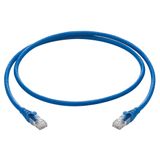
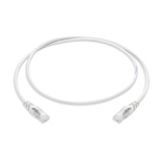
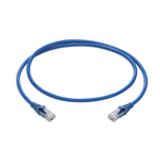
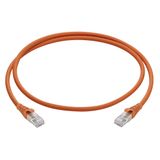
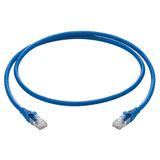
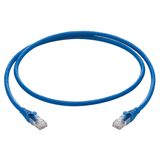
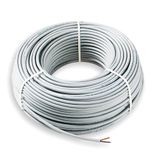


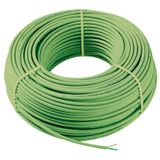
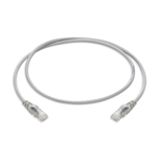

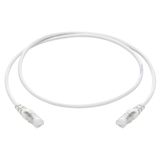
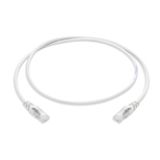



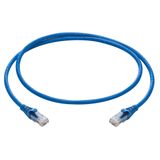

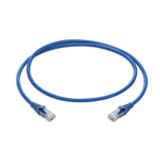
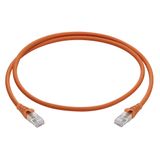

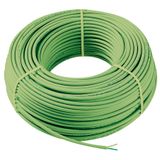



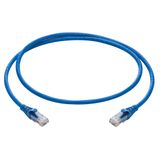

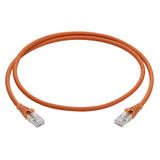

vimar lan cables portfolio and categories
For offices, hospitality, and teaching spaces that need predictable test results, the vimar lan cables lineup covers permanent-link copper and ready-made assemblies matched to Vimar trunking, conduits, and wall plates. Categories include Cat5e, Cat6, and Cat6A in PVC and LSZH jackets with CPR ratings from Eca up to Cca-s1,d1,a1. Solid conductors serve fixed links; stranded variants handle patching. Reel markings (DoP, metre count, batch) and tight OD tolerances keep installation and certification straightforward.
vimar computer network cables copper families and screening
Unscreened U/UTP is the default for quiet office floors; F/UTP adds an overall foil for mixed power/lighting trays; S/FTP with foil-per-pair and braid takes care of VFD noise and 10G alien-crosstalk margins. The vimar computer network cables range specifies 23 AWG solid for Cat6/Cat6A permanent links and 24 AWG for Cat5e, with printed metre marks every 0.5–1.0 m to speed cutting and labeling. Target NEXT/PS-ANEXT headroom is built in, so channels clear ISO/IEC 11801-1 when terminations are done correctly.
vimar ethernet cables PoE performance and bandwidth grades
Projects running cameras, APs, and panels over PoE should lock conductor resistance (≤ 9.38 Ω/100 m for 23 AWG), bundle heat data, and 500 MHz bandwidth on Cat6A. The vimar ethernet cables families are validated for IEEE 802.3af/at/bt with published temperature rise for large bundles, bend radius ≥ 4×OD installed (≥ 8×OD during pull), and rated pull tension so links don’t drift after certification. Specify screen drain wire sizes and 360° clamp hardware at entry plates to keep shield continuity intact.
vimar patch cords assemblies and data-center options
Factory-terminated cords come in 28–26 AWG stranded for high-density fronts and 24 AWG for plant-room durability, with snagless boots and color sets for port mapping. Data-center sets add ultra-slim cords, angled plugs, and short 0.2–0.5 m jumpers for top-of-rack layouts. To avoid impedance steps, the vimar patch cords portfolio uses true 8P8C contacts with gold thickness specified per cycle count; latching tabs are reinforced so service swaps don’t break clips.
vimar data transmission cables fiber and specialty lines
Floor backbones lean on OM3/OM4 tight-buffer; risers and campus links prefer OS2 G.652.D or bend-insensitive G.657.A2 for tight channels. Pre-terminated trunks ship with LC/SC fan-outs and tested attenuation, so pulling is a single operation with no field polish. Control and AV lines sit in the same schedule: LiYY/LiYCY pairs for BMS/KNX, balanced audio, and low-cap coax for video. In mixed pull lists, vimar data transmission cables let you keep CPR class, bend radius, and gland threads consistent across all routes.
vimar rj45 network wiring device plates and termination
Wall plates and floor boxes in Eikon, Arké, and Plana accept shielded or unshielded keystones, 180° or 90°. IDC blocks accept solid 22–26 AWG; strain-relief caps and dust shutters are available. When you specify vimar rj45 network wiring, publish a single termination standard (TIA-568-B or A), shield-bond points, and minimum slack (≥ 300 mm in boxes, ≥ 1 m in racks) so maintenance and MAC moves don’t violate bend limits.
vimar structured network cabling design rules for risers and floors
Adopt a 4-connector model: rack patch panel → CP (if used) → outlet. Keep permanent links ≤ 90 m and channel ≤ 100 m, reserve 10 m for patching, and document pathway fill (≤ 60% at handover). Separation in trunking: power vs SELV with internal dividers and lid height that protects bend radius. With vimar structured network cabling, use screened Cat6A in noisy trays, unscreened Cat6 to calm areas, and fiber where riser distances or future bandwidth demand it.
Product range and series overview
- Copper bulk: Cat5e/Cat6/Cat6A U/UTP, F/UTP, S/FTP; PVC and LSZH jackets; 23/24 AWG solid; metre-marked reels.
- Fiber: OM3/OM4 tight-buffer indoor, OS2 G.652.D/G.657.A2; pigtails, fan-outs, splice trays sized to Vimar enclosures.
- Patch and cords: 28–24 AWG stranded, snagless boots, color palettes, angled and straight plugs, PoE-rated.
- Connectivity: keystones (UTP/FTP), unloaded patch panels, cable managers, surface/flush device plates matching Vimar faceplate series.
- Accessories: shield clamps, earthing tails, labels, Velcro ties, bend-radius guides, and through-floor grommets.
Technical specifications and standards that matter
Copper: ISO/IEC 11801-1, EN 50173; channel testing per ANSI/TIA-1152-A; DC loop resistance, delay skew, and TCL values as per category. PoE: IEEE 802.3af/at/bt with bundle-heat guidance. Fiber: ITU-T G.651.1 (OM3/OM4), G.652.D/G.657.A2 (OS2); connectors per IEC 61754. Reaction-to-fire: CPR EN 50575 with DoP ID; LSZH: IEC 60754/61034. Install limits: bend radius copper ≥ 4×OD (installed), fiber ≥ 10×OD; pull tension per datasheet; minimum 200–300 mm separation from VFD motor leads.
Applications and compatibility
- Offices/hospitality: Cat6 floor links with LSZH, Cat6A to APs and meeting rooms; OM3 spines between racks.
- Education/healthcare: screened Cat6A S/FTP in shared trays; OS2 risers for future 25G/40G backbones.
- Logistics/light industry: rugged Cat6A with braided screens near drives; fiber to mezzanines to bypass EMI.
All parts interface cleanly with Vimar conduits, trunking, racks, and the Eikon/Arké/Plana device ecosystem for uniform faceplates and labeling.
Integration with other Vimar products
KNX and security readers can share schedule space with LAN on multi-compartment channels; Vimar keystones snap into the same frames as power/USB modules. Patch panels and cable managers fit the brand’s racks; shield clamps and earth kits match gland-plate cutouts used in Vimar distribution enclosures.
Selection criteria for B2B buyers
- Fix service mix per route (LAN, PoE power level, AV, control) and choose copper category or fiber grade.
- Choose screening (U/UTP, F/UTP, S/FTP) by EMI exposure; define 360° bond hardware and earthing points.
- Lock CPR class (Cca/Db as required), jacket (PVC vs LSZH), OD limits for chosen trunking, and bend guides.
- Specify termination plan, labeling schema, and slack rules; reserve space for future cords and modules.
- Publish test regime: permanent-link vs channel, PoE endpoint voltage under load, OLTS/OTDR on fiber with loss budgets.
Advantages of working with Bankoflamps
Your rollout cadence sets the plan. We provide job-specific pricing, near-hour quotes by EAN/MPN, and live EU stock before pulls start. The portal shows lead times, shipment tracking, and downloadable price lists with validity windows you can plan around. Trusted clients can use post-payment up to 30 days. We consolidate partials so bulk cable, pre-terms, keystones, panels, clamps, labels, and grommets arrive route-bundled by riser. Your account manager cross-checks category selection, CPR classes, PoE heat data, bend-radius hardware, and labeling against your drawings—keeping deliveries site-ready across France, the Baltics, Germany, Spain, Italy, Belgium, and the Netherlands.